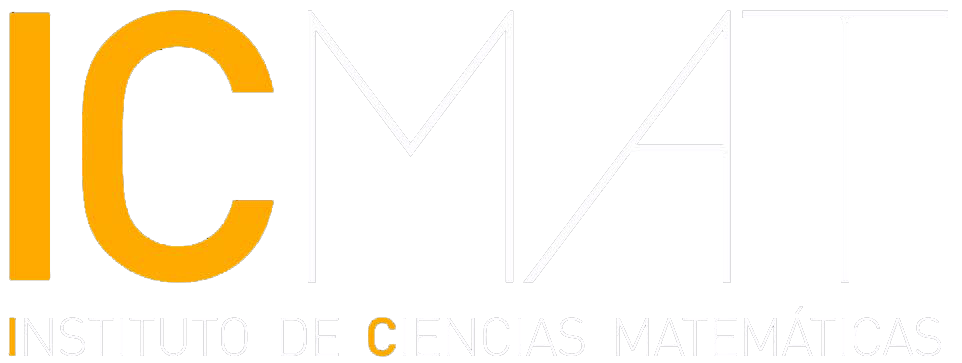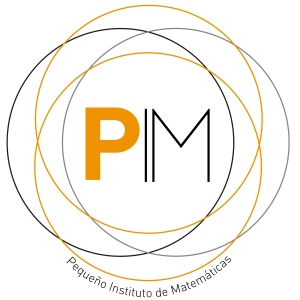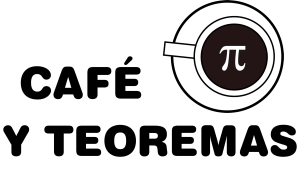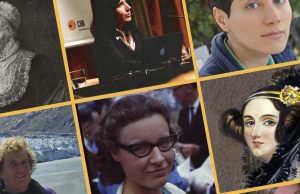
Miradas Matemáticas is a collection of books that combines didactics and the dissemination of mathematics. From 2017 to 2021, the collection was the result of a collaboration between ICMAT, the Spanish Federation of Mathematics Teachers Societies (FESPM) and the publishing house Libros de la Catarata.
- Matemáticas y literatura, Marta Macho-Stadler (UPV/EHU). Septiembre 2021. ISBN: 978-84-1352-301-9.
- Azar y Probabilidad en matemáticas, Santiago Fernández Fernández. Julio 2021. ISBN: 978-84-1352-274-6.
- La gran familia de los números, Raúl Ibáñez Torres (UPV-EHU). Mayo 2021. ISBN: 978-84-1352-225-8.
- Aventuras STEAM, Manuel García Piqueras (consultor, profesor de secundaria y asociado de la UCLM). Febrero 2021. ISBN: 978-84-1352-153-4.
- Cónicas. Historia de su independencia del cono, Agustín Carrillo de Albornoz Torres (FESPM) y Manuel de León (ICMAT-CSIC). Octubre 2020. ISBN: 978-84-9097-989-1.
- La Geometría de las Ciudades, José María Sorando Muzás (Universidad de Zaragoza). Agosto 2020. ISBN: 978-84-1352-059-9.
- Jugando con las matemáticas. Los juegos como recurso de enseñanza y aprendizaje matemático José Muñoz Santoja, Juan Antonio Hans Martín, Antonio Fernández-Aliseda Redondo (Grupo Alquerque). Junio de 2020. ISBN: 978-84-9097-989-1.
- Cálculo infinitesimal. El lenguaje matemático de la naturaleza Antonio J. Durán (Universidad de Sevilla). Febrero de 2020. ISBN: 978-84-9097-926-6.
- Una mirada distinta de las matrices. Viajes, retos y magia by Mireia López Beltran and Pura Fornals Sánchez (Federación Española de Sociedades de Profesores de Matemáticas). Noviembre 2019. ISBN: 978-84-9097-732-3.
- “Los secretos de la multiplicación” by Raúl Ibáñez (UPV-EHU). Septiembre 2019. ISBN: 978-84-9097-826-9.
- “Demostraciones visuales en matemáticas. Ver para pensar” by Ana Carvajal Sánchez and José Luis Muñoz Casado (Federación Española de Sociedades de Profesores de Matemáticas). Junio 2019. ISBN:978-84-9097-714-9.
- Geometría y moda. Secretos matemáticos del vestir. Claudi Alsina (Miradas Matemáticas, ICMAT-FESPM-Los Libros de la Catarata, enero 2019. ISBN: 978-84-9097-593-0).
- “Las matemáticas de la Biología” Manuel de León (ICMAT) y Antonio Gómez Corral (UCM-ICMAT). Enero 2019. ISBN: 978-84-9097-576-3.
- “Las matemáticas de la vida cotidiana” Miquel Albertí Palmer (Federación Española de Sociedades de Profesores de Matemáticas). Noviembre 2018. ISBN: 978-84-9097-565-7.
- “Las matemáticas del arte” Julio Rodríguez Taboada y Pilar García Agra (Federación Española de Sociedades de Profesores de Matemáticas). Septiembre 2018. ISBN: 978-84-9097-479-7.
- “Las matemáticas de la criptología” María Isabel González Vasco (Universidad Rey Juan Carlos). Julio 2018. ISBN: 978-84-9097-505-3).
- “Matemáticas electorales. Claves para interpretar sondeos y elecciones” Antonio Moreno Verdejo y Adela Mª Villegas Escobar (Federación Española de Sociedades de Profesores de Matemáticas). Octubre 2017. ISBN: 978-84-9097-363-9.
- “La engañosa sencillez de los triángulos” (“The Deceptive Simplicity of Triangles”), Manuel de León (CSIC-ICMAT) and Ágata Timón (CSIC-ICMAT).
At school, mathematics is frequently regarded as a science with no practical use, just a collection of rules that appear like pulling rabbits out of a hat; like a self-enclosed body of knowledge without evolution in time that was invented centuries ago and has not changed very much since then. For that reason, the ICMAT and the Federación Española de Sociedades de Profesores de Matemáticas (FESPM) together with the publisher Libros de la Catarata launched in 2017 the collection of books entitled Miradas Matemáticas (“Mathematical Gazes”), which combine dissemination with education in mathematics. After four years and almost twenty books published, as of 2022, ICMAT ceased to be part of the project, which continues as a collaboration between the other two participating institutions.
The main target readership for these 18 books are teachers of mathematics at Secondary School and Baccalaureate level, the aim being to provide them with fresh ideas about using material to make mathematics more interesting and attractive to students in the classroom, as well as bringing mathematical research into the classroom with a historical perspective and relating the subject to other sciences and to technological developments. Furthermore, these books can also be enjoyed as popular works by a much broader readership, since they contain exercises that present entertaining challenges for people of all ages, thus providing not just a passive experience but one in which all readers can actively participate.























